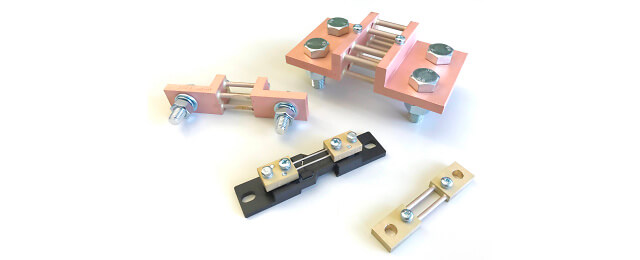Shunts
Shunts with the best price-performance ratio
Shunts are intended for the expansion of DC measuring ranges in rotary coil current meters, power meters and energy meters.
Voltage drop at the output optionally available: 60mVdc;50mVdc; 75mVdc; 100mVdc or 150mVdc
Inputs: 1A - 18kA (DC)
Accuracy class:
Class 0.2 and 0.5 for ranges ≤ 2500 A
Class 0.5 for areas > 2500 A
Mounting / Fastening:
The shunts are supplied with a screw set including thread or with a through hole
Shunt in the measuring range 1...25A, and on request also 40...150A, we can supply you with an insulating base
Insulating base for standard rail mounting 35mm
On request, we offer you additional coatings:
Painting or silvering
Dimensions:
Execution dependent (see data sheet)
Special:
We can produce shunt according to your specifications and needs - contact us!
Datenblatt Jecotec Shunts / Nebenwiderstände
Principle:
A shunt, also known as a shunt resistor, is originally an electrically conductive device that is connected in parallel to a part of a circuit to dissipation an electrical current from that part.
The term shunt has evolved and also refers to a current measuring resistor, which is a low-impedance electrical measuring resistor, often equipped with separate current and voltage terminals. This is inserted directly into the live line. Due to the voltage meter connected in parallel to this type of shunt, only a mostly negligibly small current is derived.
For large currents, guideline value greater than 10 A, the current measurement is usually carried out by measuring the electrical voltage on a shunt with a voltage measuring device. These shunts are often designed for a voltage of 60 mV or 150 mV at the nominal value of the current. The current in the shunt is calculated according to Ohm's law (source Wikipedia).
